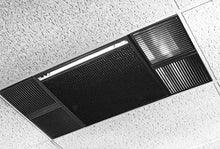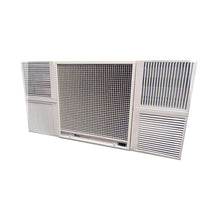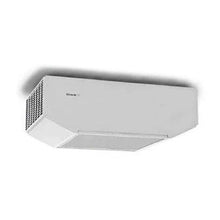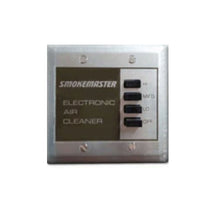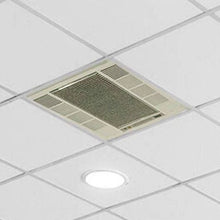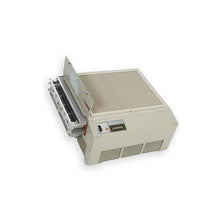Beyond the Numbers: A Deep Dive into Air Purifier Performance for Smoke Removal

Few things are as unsettling as the smell and sight of smoke in your home. Whether it's from a nearby wildfire, an overcooked meal, or a neighbor's fireplace, the presence of smoke is a clear sign that the air you're breathing is far from clean. In these moments, many people turn to air purifiers, hoping to find a quick and effective solution. But as you begin your search, you'll inevitably encounter a confusing alphabet soup of ratings and metrics, with "CADR" often at the forefront.
At Commercial Air Purifiers, LLC, we understand this confusion. We also know that when you're dealing with smoke, you need more than a number on a box; you need a real solution. Our goal with this guide is to cut through the marketing jargon and give you a genuine understanding of what truly makes an air purifier effective for smoke removal. We'll explore the science behind air purification, share our insights from years in the industry, and empower you to make an informed decision for the health of your home and family.
The Problem with Smoke: More Than Just a Smell
Smoke isn't a single substance—it's a complex cocktail of fine particles, gases, and volatile organic compounds (VOCs). The particles, in particular, are the most concerning from a health standpoint. They are microscopic, often smaller than 2.5 micrometers in diameter (PM2.5), which allows them to bypass your body's natural defenses and lodge deep within your lungs. According to the United States Environmental Protection Agency (EPA), exposure to these fine particles can lead to a range of health issues, from minor eye, nose, and throat irritation to more serious respiratory and cardiovascular problems.
Wildfire smoke is a particularly potent example. A 2021 study in the journal Science Advances noted that the frequency and intensity of wildfires are increasing, leading to widespread and prolonged smoke events. This isn't just a West Coast issue; smoke can travel thousands of miles, impacting air quality across the continent. When this happens, the air inside your home can become just as contaminated as the air outside, if not more so, due to inadequate ventilation and the accumulation of pollutants.
Understanding the complexity of smoke is the first step toward finding an effective air purification solution. Simply filtering out a single component, like a large dust particle, won't solve the problem. You need a system designed to handle the full spectrum of pollutants that smoke introduces into your environment.
Why CADR Isn't the Whole Story for Smoke
The Clean Air Delivery Rate, or CADR, is a metric developed by the Association of Home Appliance Manufacturers (AHAM). It measures the volume of clean air an air purifier can produce, typically for three specific pollutants: smoke, pollen, and dust. CADR is often presented as a key indicator of an air purifier's effectiveness, but its reliance on this metric alone can be misleading, especially when it comes to the nuances of smoke.
Here's the issue: CADR is a laboratory-tested number, a snapshot under ideal conditions. It doesn't account for real-world variables like the unique mixture of particles and gases in a smoke event, the layout of your home, or the presence of other pollutants. Furthermore, the CADR rating for smoke is based on a specific type of test smoke, which may not accurately represent the composition of smoke from a wildfire or kitchen fire.
While a high CADR for smoke suggests a unit has a strong fan and a filter that can capture particles, it tells you nothing about the filter's quality or longevity. It also doesn't provide insight into how well the unit handles the gaseous components of smoke, such as VOCs. At Commercial Air Purifiers, LLC, we prefer to talk about CFM—Cubic Feet per Minute. CFM is a direct measurement of the volume of air an air purifier can move through its filters each minute. It's a foundational metric for determining if a unit is appropriately sized for a given room. You can use our CFM calculator to determine the specific needs for your space.
A high CFM is crucial because it indicates the unit's ability to circulate and filter the entire volume of air in a room multiple times per hour. This is known as the air changes per hour (ACH). For a serious issue like smoke, we recommend a high ACH to ensure the air is being cleaned quickly and continuously. A unit with a high CFM can achieve the necessary ACH in a larger space, making it a more versatile and powerful solution.
The Three Pillars of a Truly Effective Air Purifier for Smoke
When evaluating an air purifier for smoke, we at Commercial Air Purifiers, LLC, look beyond the numbers and focus on three key areas: filtration technology, build quality, and system design.
The first pillar is filtration. A true HEPA (High-Efficiency Particulate Air) filter is the gold standard for capturing the fine particles in smoke. By definition, a HEPA filter must remove at least 99.97% of airborne particles that are 0.3 micrometers in diameter. These filters are incredibly dense, and a quality HEPA filter is the core of any effective air purification system for smoke. However, as a study published in the Journal of Environmental and Public Health noted, while HEPA filters are excellent for particulate matter, they are not effective at removing gaseous pollutants. This is where a second layer of filtration is essential. Activated carbon filters, a porous material with a massive surface area, are highly effective at adsorbing gases, odors, and VOCs. For smoke, a deep-bed activated carbon filter is non-negotiable.
The second pillar is build quality. This is where we differentiate ourselves. We believe that an air purifier is an investment in your health, not a disposable appliance. That’s why we only sell units made in North America. These aren’t cheap, plastic units that will be in a landfill in a few years. They are built with robust, durable materials designed for long-term, continuous operation. This commitment to quality ensures the unit’s integrity and prevents air from bypassing the filters, a common issue in lower-quality models. We guarantee our products because we know they are built to last and to perform exactly as advertised.
Finally, the third pillar is system design. An air purifier isn't just a fan and a filter. A well-designed system ensures the air is drawn in efficiently, passed through the filters without leaks, and then expelled cleanly back into the room. This includes the fan's power and noise level, the sealed nature of the filter chamber, and the overall airflow dynamics. A high CFM unit with a poorly designed system can be just as ineffective as a small, low-powered unit. Our focus is on the complete system, from the initial air intake to the final output, to ensure maximum efficiency and performance.
Practical Steps and Recommendations for Smoke
When smoke invades your space, what should you do? The first step is to close all windows and doors to prevent more pollutants from entering. If you have central air conditioning, set it to recirculate and check that you have a high-quality filter installed.
The next step is to use a high-quality air purifier. When selecting a unit, don't get hung up on a single number like CADR. Instead, focus on the CFM rating and the quality of the filtration system. Look for a unit that combines a true HEPA filter with a substantial amount of activated carbon. Consider the size of your space and use our CFM calculator to find a unit that can handle the volume of air effectively.
For persistent or severe smoke problems, consider a more powerful, professional-grade unit. These units often have significantly higher CFM ratings and more robust filters, allowing them to clean the air in a much shorter period. At Commercial Air Purifiers, LLC, we often work with clients who have dealt with long-term smoke issues and our recommendation is always the same: invest in a unit that is over-engineered for your space rather than one that just meets the minimum requirements. This ensures you have a safety margin and that the unit can handle sudden spikes in air pollution.
Frequently Asked Questions
How long does it take for an air purifier to remove smoke?
The time it takes to clear smoke depends on several factors, including the severity of the smoke, the size of the room, and the CFM of the air purifier. A high-CFM unit can clear a room in a matter of minutes, while a smaller unit may take hours.
Do I need an air purifier for every room?
For comprehensive protection, we recommend placing an air purifier in the rooms where you spend the most time, such as your bedroom and living room. For open-concept spaces, a single, powerful high-CFM unit may be sufficient.
How often should I change my filters?
Filter life depends on usage and the level of pollution. In a smoke-heavy environment, filters will need to be changed more frequently. Most manufacturers provide an estimated filter life, but it's important to check your filters regularly to see if they are dirty. A well-maintained unit is a functional unit.
The Path to Cleaner Air
Navigating the world of air purifiers can be daunting, but with the right knowledge, it becomes a simple matter of finding a solution that genuinely works. Don't be swayed by single, simple metrics like CADR. Instead, focus on the real performance indicators: CFM, the quality of the HEPA and activated carbon filters, and the overall build quality of the unit. The presence of smoke is a serious air quality concern that requires a serious solution.
At Commercial Air Purifiers, LLC, our entire philosophy is built around this principle. We don't sell cheap, disposable units; we provide guaranteed, high-quality air purification systems designed to provide a real, lasting solution. We believe in providing our customers with the best tools to protect their health and well-being. By understanding the true science of air purification and looking for a high-CFM unit with robust, quality filtration, you can confidently choose a system that will effectively handle smoke and bring clean air back into your home.
By Commercial Air Purifiers, LLC

